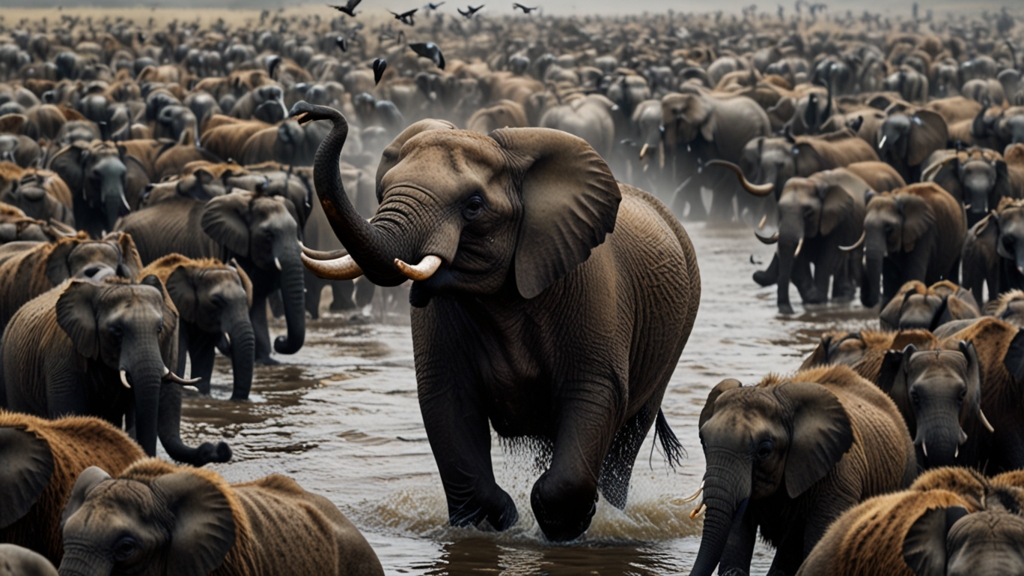The Great Mammal Migration: A Journey Like No Other
Migration is one of nature's most astonishing phenomena, and the Great Mammal Migration stands out as a journey like no other. Each year, millions of mammals traverse vast landscapes in pursuit of food, breeding grounds, and favorable climates. From the African savannas to the North American plains, these journeys highlight the resilience and adaptability of mammals. This article explores the intricacies, challenges, and marvels of these epic migrations.
The Serengeti Wildebeest Migration
Perhaps the most iconic of all mammal migrations is the annual journey of the wildebeest across the Serengeti and Maasai Mara ecosystems. Over 1.5 million wildebeest, accompanied by hundreds of thousands of zebras and antelopes, embark on a circular trek covering approximately 1,000 miles. This migration is driven by the relentless search for fresh grazing grounds and water, dictated by the seasonal rains.
"The Serengeti wildebeest migration is often referred to as 'The Greatest Show on Earth' for its sheer scale and the dramatic interactions between predators and prey," said Dr. Richard Leakey, renowned paleoanthropologist and conservationist.
As the herds move, they face numerous obstacles including treacherous river crossings teeming with crocodiles, and a gauntlet of predators such as lions and hyenas. The survival of each individual is constantly tested, demonstrating the raw and unforgiving nature of the animal kingdom.
The Monarchs of the North: The Caribou
In the tundras of North America, the caribou undertake one of the longest terrestrial migrations, traveling up to 3,000 miles annually. These majestic creatures navigate through harsh environments, from the boreal forests to the frozen Arctic. Their journey is a quest for the best grazing lands, primarily consisting of lichens and other vegetation, as well as safe calving grounds.
Caribou migrations are crucial for the ecological balance of the regions they traverse. Their movement aids in nutrient cycling and maintains the health of their habitats. However, climate change and industrial development pose significant threats to their migratory routes and survival.
"The caribou migration is not just a journey for survival, but also an intricate dance with nature's delicate balance," noted Sarah James, an environmental activist and member of the Gwich'in Nation. "Protecting these migratory pathways is essential for the survival of the species and the environment."
Whales: Giants of the Ocean
Migrations are not exclusive to land mammals. The ocean’s giants, such as the humpback and gray whales, embark on immense journeys across the seas. These cetaceans migrate between feeding grounds rich in plankton and krill during the summer and warmer breeding waters during the winter.
Humpback whales, for instance, travel up to 5,000 miles one way from the cold waters of the Antarctic to the warm lagoons of Hawaii or Central America. These migrations are vital for their reproductive success and offer a unique opportunity for whale watchers to marvel at these majestic creatures.
"Witnessing the migration of whales is a humbling experience," said marine biologist Laura Richardson. "It’s a reminder of the vast and interconnected nature of our planet's ecosystems."
The Impact of Human Activity
While the Great Mammal Migration showcases nature's grandeur, it is under increasing threat from human activities. Habitat destruction, climate change, and poaching are some of the major challenges these migratory routes face. Conservation efforts, such as protected areas and stricter regulations on hunting and land use, are critical in ensuring the survival of these species and their epic journeys.
A Call to Action
The Great Mammal Migration is a testament to the resilience of nature and its inhabitants. These migrations highlight the importance of preserving our natural world for future generations. By supporting conservation initiatives, reducing our carbon footprint, and promoting biodiversity, we can play a small but significant role in safeguarding these incredible journeys.
In conclusion, the Great Mammal Migration is not just a journey of survival for these animals but also an awe-inspiring natural spectacle that underscores the intricate connections within Earth's ecosystems. It is a call to appreciate, protect, and cherish the wondrous biodiversity that makes our planet unique.







